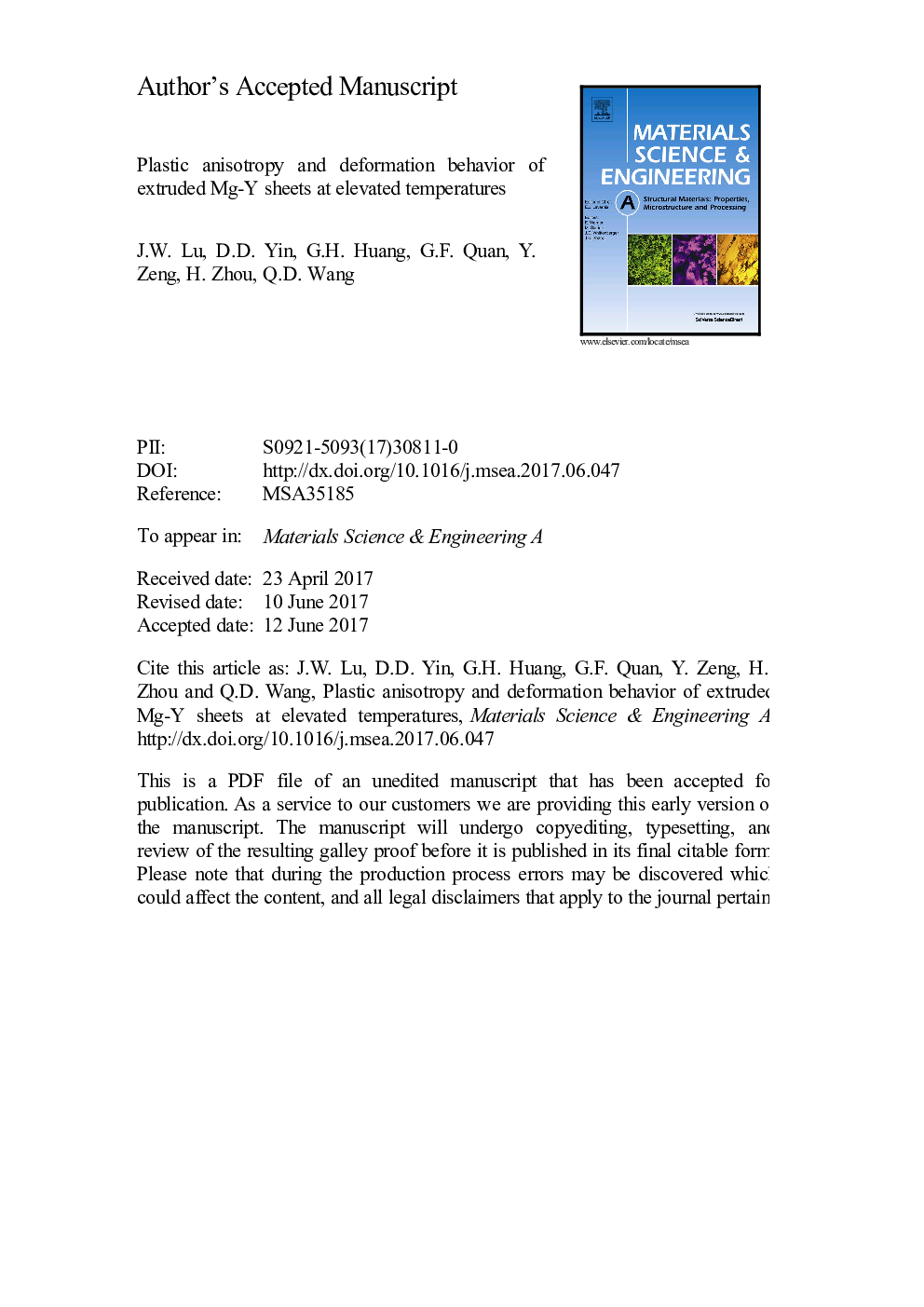| Article ID | Journal | Published Year | Pages | File Type |
|---|---|---|---|---|
| 5455481 | Materials Science and Engineering: A | 2017 | 28 Pages |
Abstract
The plastic anisotropy in terms of tensile mechanical property, Lankford coefficient (r), and microstructure evolution of as-extruded Mg-1Y (wt%) and Mg-5Y (wt%) sheets along the extrusion direction (ED), transverse direction (TD), and diagonal direction (DD) were investigated in detail at temperatures between 25Â â (RT) and 300Â â. The sheets exhibited anisotropic deformation behavior at lower temperatures, and nearly isotropic for Mg-5Y at 300Â â in these three directions. For both sheets, the ultimate tensile strength anisotropy (UA) and elongation anisotropy (EA) was not sensitive to the temperature, while the yield strength anisotropy (YA) decreased significantly from 49.1% (Mg-1Y) and 40.2% (Mg-5Y) at RT to 7.2% and 2.7% at 300Â â, respectively. The r values of Mg-1Y in all directions first increased from 0.66-1.4 (RT) to 0.81-1.98 (200Â â) then decreased to 0.67-1.56 (300Â â), while those of Mg-5Y decreased from 1.04-2.05 (RT) to 1.18-1.35 (300Â â) with increasing temperature. Few twins were observed in Mg-5Y after tension at RT while large amounts of twins occurred in Mg-1Y. The huge reduction of twins and the weakened basal texture are believed to increase the r value from 0.66 (Mg-1Y) to 1.04 (Mg-5Y) at RT. At 300Â â, dynamic recrystallized (DRX) grains appeared in Mg-1Y while only a few DRX grains showed up in the vicinity of grain boundaries in Mg-5Y, which may be closely related to grain boundary segregation of the yttrium atoms.
Related Topics
Physical Sciences and Engineering
Materials Science
Materials Science (General)
Authors
J.W. Lu, D.D. Yin, G.H. Huang, G.F. Quan, Y. Zeng, H. Zhou, Q.D. Wang,
